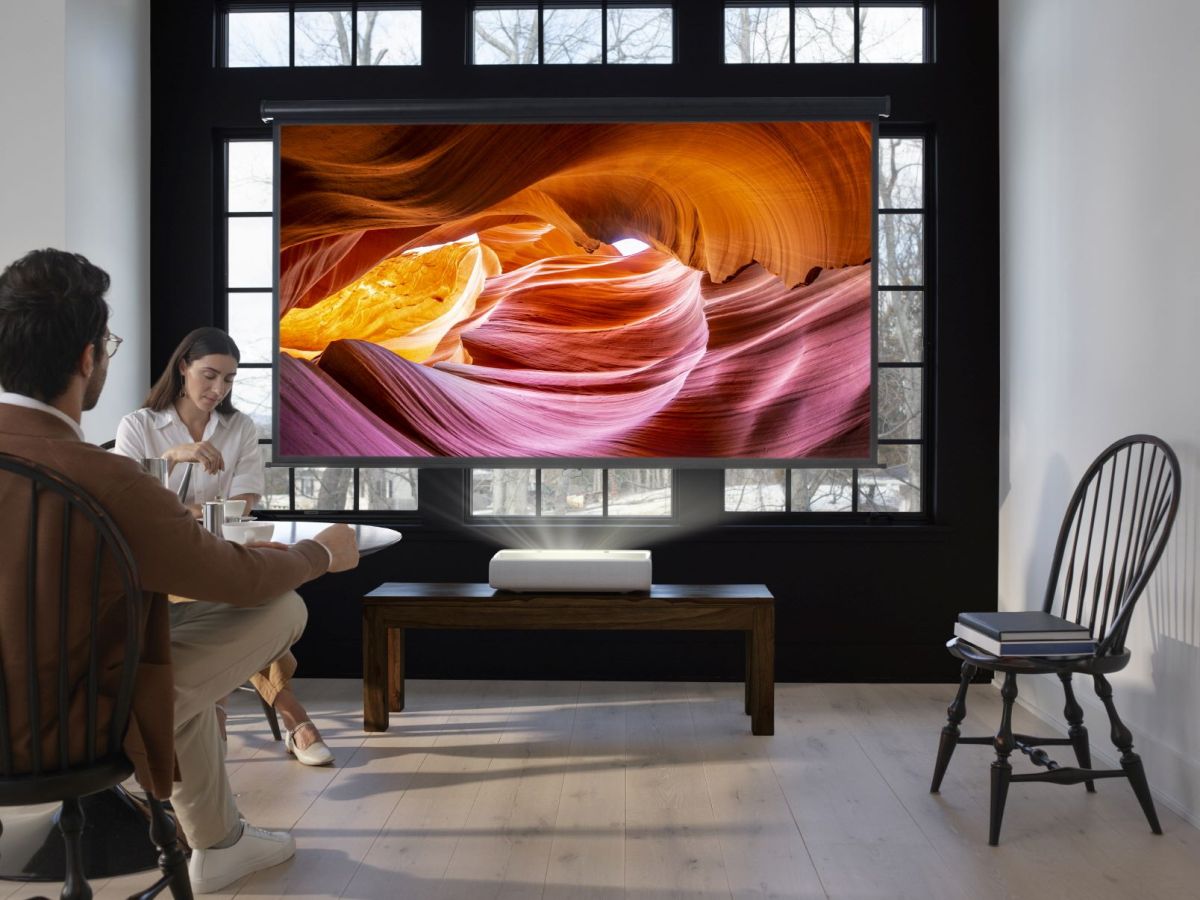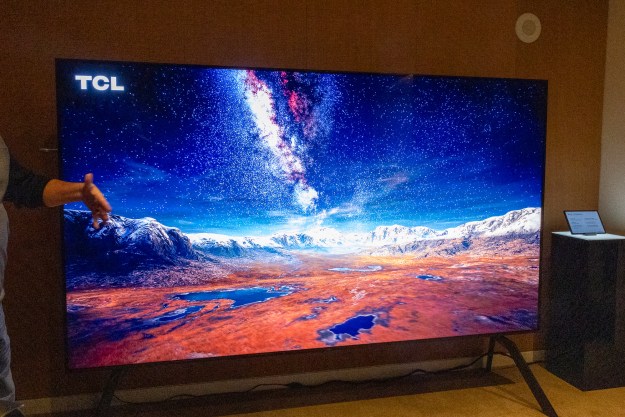Samsung isn’t attending IFA 2020, but that hasn’t stopped the tech giant from trying to steal the show anyways.
At its virtual “Life Unstoppable” press conference, Samsung announced The Premiere, a 4K projector with an ultra short-throw design and laser technology — the company calls it the “new anchor product” in Samsung’s Lifestyle product portfolio, which also includes The Frame, The Sero, and The Terrace.
Samsung didn’t reveal a price for this new product but did say that The Premiere will be available in 130-inch (the LSP9T) and 120-inch (LSP7T) models, and will roll out globally later this year.
Here’s what we know about The Premiere.
Design

Samsung says The Premiere incorporates an “all-in-one, compact, space-saving design” that makes it ideal for a variety of living room settings and arrangements. Being an ultra short-throw projector, The Premiere can be placed directly in front of the wall or screen it’s projecting onto, which eliminates the need to mount a projector at the back of the room. That, of course, isn’t exactly a possibility for many living room situations.
The Premiere has powerful built-in woofers and Acoustic Beam surround sound, which Samsung says, “reduces the need for additional sound equipment in tighter spaces.” From our experiences, we’d proceed with caution in this area. The Premiere may well provide a sound that you can hear, but typically, projectors don’t have the ability to produce a sound that matches the larger-than-life screen size they’re projecting. It might be best to pair some external sound with this projector, even if the built-in sound system does sound decent.
Features

According to the company, The Premiere is the world’s first projector to be certified as HDR10+, one that’s equipped with triple laser technology and delivers up to 2,800 ANSI lumens for a considerably bright picture. Samsung adds that The Premiere is first projector of its kind to support Filmmaker Mode, which is designed to let viewers watch movies as directors initially intended.
You won’t necessarily need a streaming device in conjunction with The Premiere since the projector comes loaded with Samsung’s Tizen Smart TV platform and all the major streaming services that are supported by that operating system. You’ll also get some mobile connectivity features like Tap View and mirroring to send compatible content from your mobile device straight to the projector.
Picture quality
This is a tough category to discuss since we haven’t seen The Premiere in action yet, but as mentioned above, it’s got the right features to make for great picture quality if The Premiere can live up to its specs.
If it can, and if it can be priced competitively, The Premiere could be a compelling alternative to the traditional 4K display. Projectors have long been the best bang for your buck in terms of getting the biggest screen possible. If The Premiere can add exceptional picture quality and convenience thanks to its ultra short-throw design, it could be enough to convert some TV fans into projector enthusiasts.
Editors' Recommendations
- What we want to see from the next Apple TV 4K
- Samsung’s new 98-inch DU9000 4K TV is just $4,000. Can it beat TCL and Hisense?
- Vizio’s first 86-inch 4K TV is coming soon, for $999
- Belkin drops a $50 mount for iPhone video calls on Apple TV 4K
- If you don’t see CBS in 4K on YouTube TV, try this




